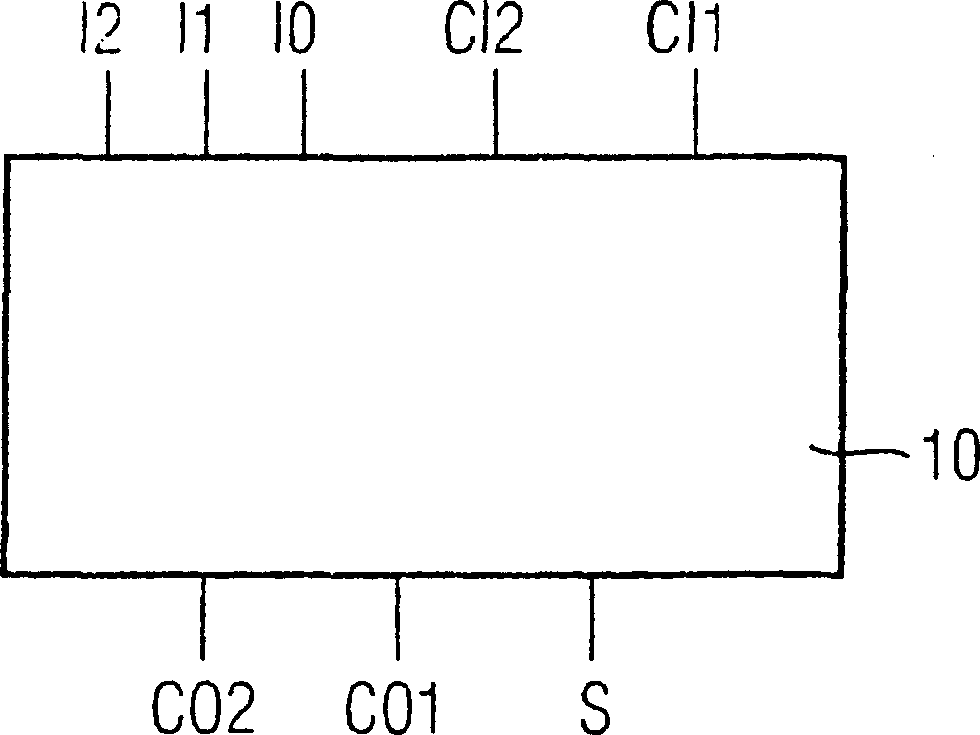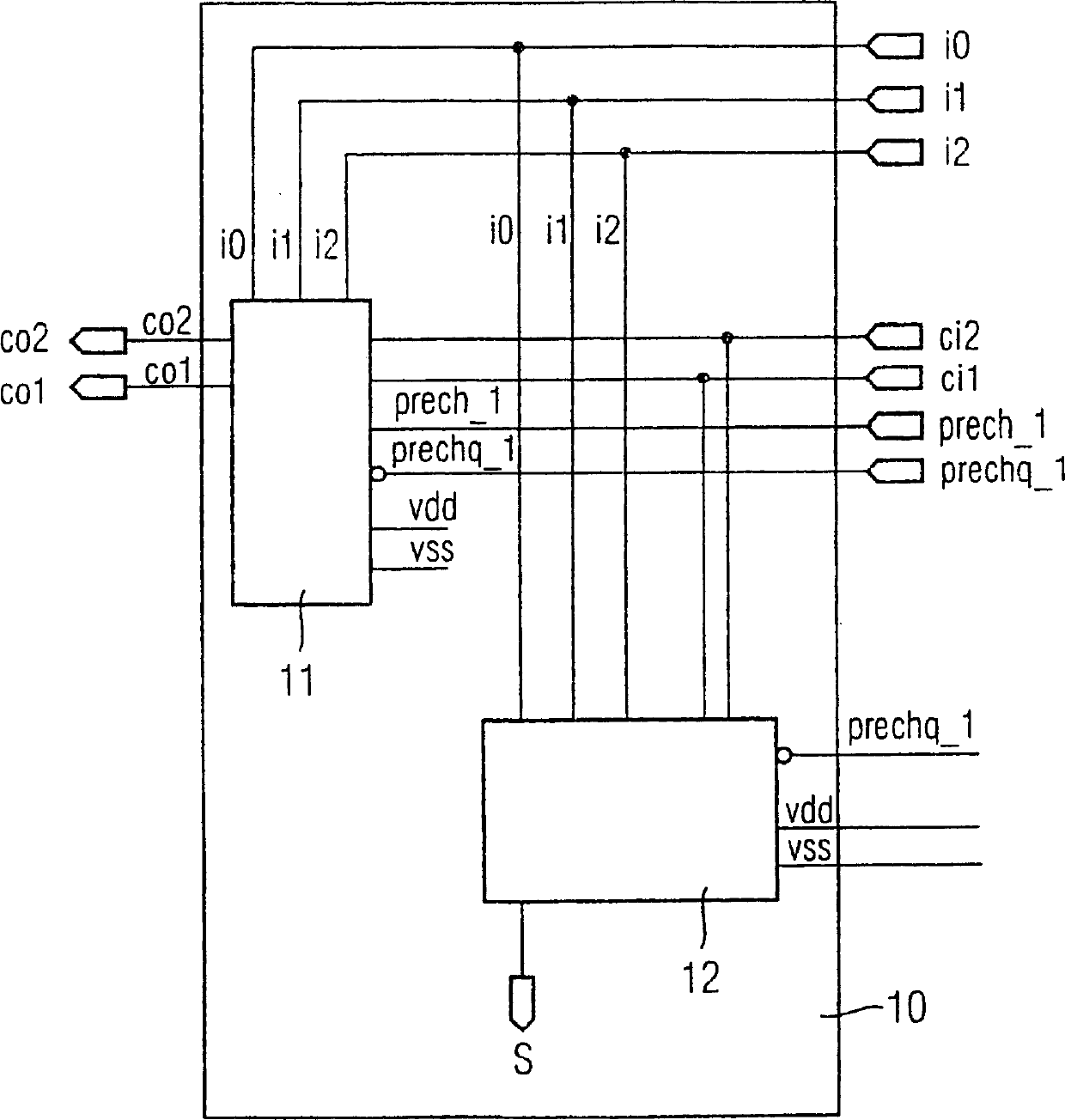Carry-ripple adder
A bit-by-bit, adder technique used in instruments, a quantity counter, calculations using non-contact manufacturing equipment, etc.
- Summary
- Abstract
- Description
- Claims
- Application Information
AI Technical Summary
Problems solved by technology
Method used
Image
Examples
Embodiment Construction
[0034] In the figures, like reference symbols designate identical or functionally identical components.
[0035] Figure 1 shows the principle of a "3 and 2 to 3 carry-wise adder" 10 with three bit inputs i0, i1 and i2, two identical carry inputs ci1, ci2, two identical carry outputs co1, co2 and a sum output s sexual description.
[0036] Figure 2 shows the truth or function table for a bit in the bit-wise carry adder in Figure 1. According to the code selected for the two identical carry-out signals co1 and co2, no combination of inputs where ci2 = 1 and ci1 = 0 (hatched in Figure 2) occurs in operation, because only if ci1 has been set Sets ci2, from which the double carry is deduced. The fact that "do not care elements" occur is used to minimize the circuit. A simple sum of the five input bits at the inputs i0, i1, i2, ci1, ci2 produces the table at position s, e.g. if the sum of the input bits ≥ 2, a carry is produced at the output co1, once the sum of the five input bi...
PUM
 Login to View More
Login to View More Abstract
Description
Claims
Application Information
 Login to View More
Login to View More - R&D
- Intellectual Property
- Life Sciences
- Materials
- Tech Scout
- Unparalleled Data Quality
- Higher Quality Content
- 60% Fewer Hallucinations
Browse by: Latest US Patents, China's latest patents, Technical Efficacy Thesaurus, Application Domain, Technology Topic, Popular Technical Reports.
© 2025 PatSnap. All rights reserved.Legal|Privacy policy|Modern Slavery Act Transparency Statement|Sitemap|About US| Contact US: help@patsnap.com



